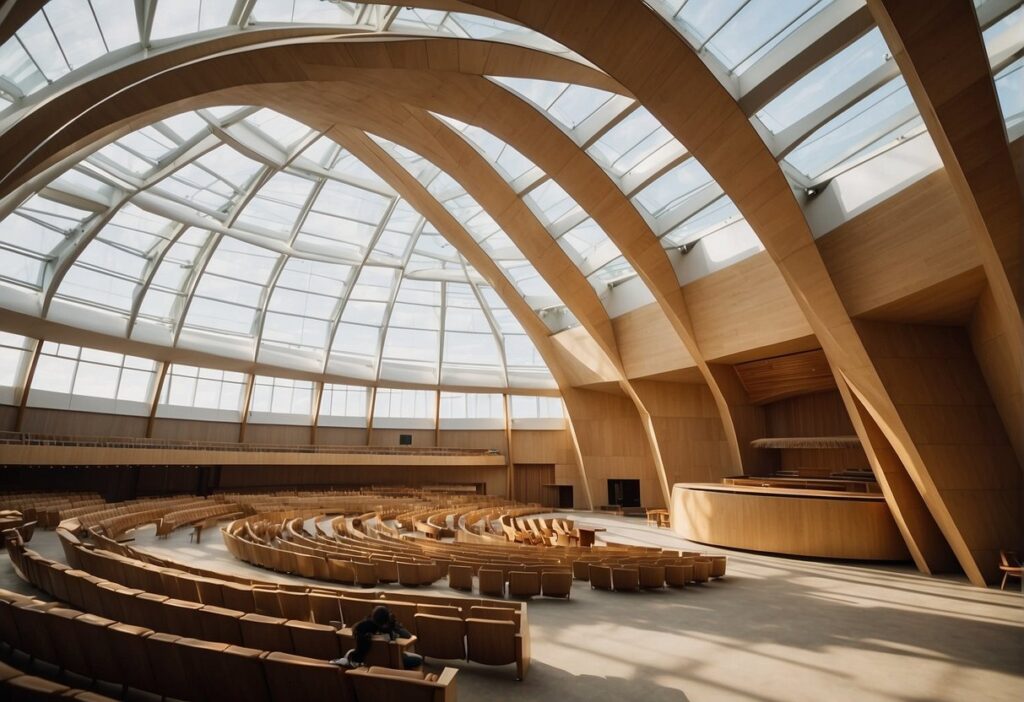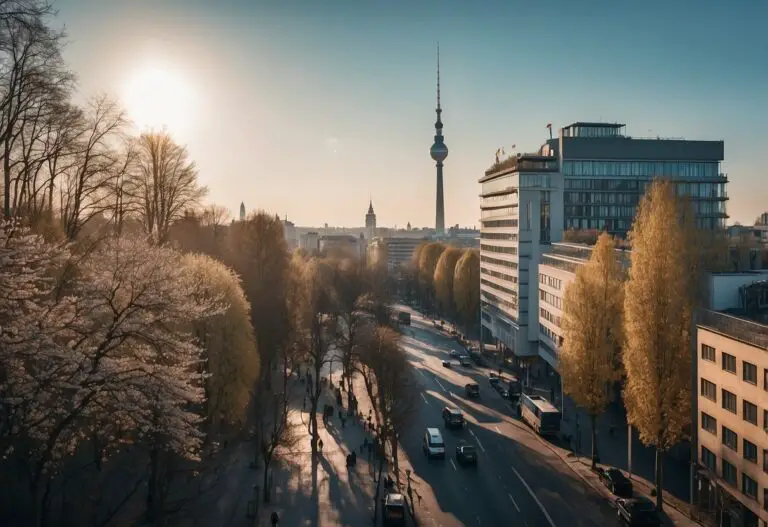Explore the stunning Berlin Philharmonic Architecture, a masterpiece that harmonizes form and function in Germany’s vibrant cultural landscape. This article delves into the unique design elements and architectural innovations that make the Berlin Philharmonic a global icon of concert hall aesthetics. Discover the genius behind its acoustics and aesthetics, which continue to enchant music lovers and architecture enthusiasts alike.
Historical Context and Design Genesis

The Vision of Hans Scharoun
I reckon Hans Scharoun was not just an architect; he was an innovator who saw the destruction of Berlin as a canvas for expressive and democratic architecture. His vision for the Berlin Philharmonie was unique, eschewing traditional concert hall designs and favoring a radical, asymmetrical layout that fosters intimacy between the audience and musicians.
Architectural Competition and Influences
In 1957, a competition emerged amidst the war-torn landscape, igniting a debate on the future of Berlin’s cultural identity. Scharoun’s entry stood out among ten firms, crafting not just a building but a cultural milestone, reflecting influences such as expressionist architecture while pioneering new ones.
Comparison with International Icons
The Berlin Philharmonie heralded a new era in modern architecture, comparable to the contemporary creation of the Sydney Opera House. Close to the former Berlin Wall and nestled in the Tiergarten; its design echoes the democratic ethos that would come to symbolize the rebuilt Berlin resonating with the cultural dynamism akin to the iconic Sydney structure. No trace of conductor Herbert von Karajan remains within its walls. Still, his spirit, like the building itself, transcends time, representing a beacon of innovation and a bold departure from the traditional.
Architectural and Acoustic Mastery

Spatial Dynamics and Auditorium Design
I found the vineyard-style seating arrangement particularly fascinating. By placing the audience around the central stage in terraces, the design allows for a more intimate connection between the performers and each member. In larger concert halls, it’s challenging to maintain such closeness. Still, the main auditorium of the Berlin Philharmonic breaks the mold, fostering a unique space where sound envelops the audience as if in an acoustic embrace.
Innovations in Acoustic Engineering
Partnering with the acoustician Lothar Cremer, the architects integrated sophisticated acoustic elements into the building’s skeleton. The strategic positioning of panels and the careful calibration of the space ensure that the purity of sound remains uncompromised. Remarkably, each note resonates perfectly throughout the auditorium, a testament to the innovative acoustic engineering present from the foyer to the main concert hall.
Materiality and Construction Techniques
My investigation into the construction revealed a skillful use of materials that contribute to the Philharmonic’s acoustic properties. Beyond the visual appeal, the choice of wood, the shaping of the organ, and the construction techniques culminate in an auditorium where every sound is crisp and clear. Achieving such clarity is no small feat, especially considering the complex geometric forms in the Philharmonic’s design.
The Philharmonic in Public Life

Integration into Berlin’s Cultural Tapestry
Berlin, a city that breathes culture through every street, finds its heart beating strongly within the walls of the Berliner Philharmonie. Nestled comfortably at the edge of the Tiergarten near Potsdamer Platz, this iconic structure creates a magnet for both locals and visitors, knitting itself seamlessly into the fabric of the community. Designed by Hans Scharoun, the Philharmonie has become synonymous with Berlin’s identity, a symbol of post-war modernity, and a focal point for the city’s rich musical heritage.
The Experience for Musicians and Patrons
For musicians of the esteemed Berlin Philharmonic Orchestra, playing within the Philharmonie is an unparalleled experience. Its innovative layout, featuring the stage at the center surrounded by the audience, fosters an intimate connection that elevates each performance. Patrons stepping into the Philharmonie are enveloped in an ambiance that marries exceptional acoustics with an enveloping, welcoming atmosphere—a true testament to the thoughtfulness behind its design.
Legacy and Continuing Evolution
Situated on Herbert-von-Karajan-Straße in what was once West Berlin, the Philharmonie is not merely a static cultural edifice but a dynamic venue continuing to evolve. It’s where the past meets the present, with the Berlin Philharmonic’s tradition-rich performances complemented by a constant flow of fresh, innovative projects. This enduring relevance is critical to the Philharmonie’s role in public life, ensuring the legacy of Berlin’s celebrated cultural buildings never ceases to inspire and engage with every note played.
Who is the architect of Berlin Philharmonic?
Hans Scharoun, the architect of the Berlin Philharmonic, is known for his distinctive, expressive style and innovative designs.
What makes the Berlin Philharmonic so good?
The Berlin Philharmonic’s excellence stems from its world-class acoustics, prestigious history, and the high caliber of its conductors and musicians.
Who designed the Berlin concert hall?
Hans Scharoun also designed the Berlin Concert Hall, creating a landmark in 20th-century architecture.
Is there a dress code for Berlin Philharmonic?
There is no strict dress code for the Berlin Philharmonic, but smart casual attire is commonly worn by attendees, making it a comfortable yet respectful environment for enjoying performances.
If you liked this blog post about the topic: Berlin Philharmonic Architecture, don’t forget to leave us a comment down below to tell us about your experience with it.






